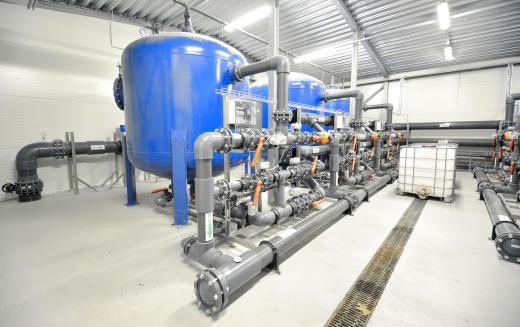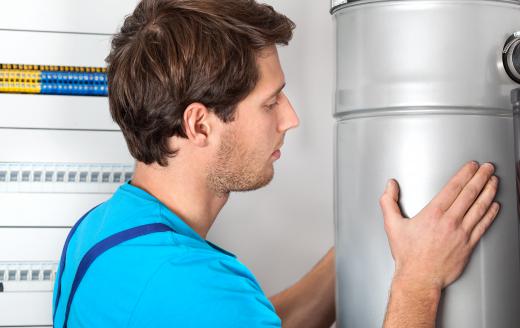A boiler feedwater pump functions as a mechanical device used to pump water from a holding tank into a boiler. The water supplied by the feedwater pump is needed to replenish the boiler water lost during normal operation. Used on most systems, the boiler feedwater pumps make use of a boiler to supply hot water for heating or steam to drive machinery. Typically, these feedwater systems operate automatically using sensors in the boiler to switch the pump on when the water level reaches a pre-determined low point. The pumps used on the systems are usually centrifugal types operated by electric or steam-driven motors.
Hot water and steam generation systems rely on a closed water heating vessel known as a boiler for their operation. These boilers are generally equipped with burners that heat the water in a series of tubes encased in a closed shell. In this way, a continuous supply of hot water or steam is fed to the rest of the system. Unfortunately, this type of system generally experiences a fair amount of water loss in a relatively short period of time as a part of the heating and energy usage process. To ensure continued operation and to prevent overheating and damage to the boiler, the water level in a boiler should be monitored constantly and replenished when the level drops.

This function is achieved with a boiler feedwater pump, which is a separate device used to move water from a holding tank to the boiler when the water level drops. Typically single- or multi-stage centrifugal devices, the boiler feedwater pump is driven by an electric or steam-operated motor. The water drawn from the holding tank is also usually pre-heated by a feedwater heater before it is pumped into the boiler. This prevents a sudden inflow of cold water from damaging the boiler and increases the overall efficiency of the system. These heaters are usually located between the boiler feedwater pump and the boiler.

Most boiler feedwater pump systems are controlled via a series of level sensors in the boiler. When the water level in the boiler drops below a pre-set low point, the pump starts automatically and pumps the water directly into the boiler until the level reaches the full set point, at which time the pump switches off. This allows for safe, unsupervised operation of the boiler. Most systems do, however, include manual over-ride features allowing operators to top off the boiler independently of the automated level sensing equipment.
